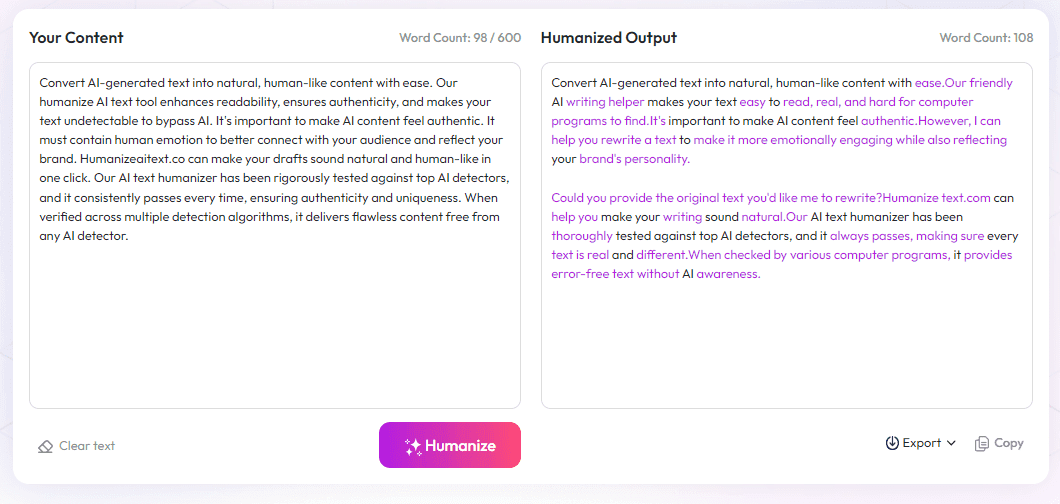Table of Contents
Building a personal brand website might feel overwhelming, but I get it—you're looking for a simple way to stand out online. Keep reading, and I’ll show you the key pages, design ideas, and content tips that make your site trustworthy and authentic. By the end, you'll see just how easy it can be to create a digital space that truly reflects who you are and what you do.
Key Takeaways
Key Takeaways
- Build a personal website with core pages: Homepage, About, Portfolio, Services, Contact, and a Blog. These help visitors understand who you are and what you do quickly.
- Keep your design consistent by choosing a limited color palette and matching fonts. Use visuals that reflect your brand to build recognition and trust.
- Use unique icons and visuals to make your site stand out. Maintain uniform styles across pages for a professional look.
- Create a simple style guide to keep your branding consistent as your site and presence grow.
- Leverage social media by sharing your journey, engaging regularly, and responding to followers. Focus on platforms that suit your niche.
- Share insights and industry tips to become seen as a trusted authority. Avoid overly promotional content and offer real value.
- Be authentic by showing your true self, sharing stories of struggles and successes. Transparency builds loyalty and trust.
- Use high-quality visuals that match your personality and niche. Consistent visual branding helps people recognize your brand easily.

1. Essential Pages for a Personal Brand Website
If you want your personal brand to shine online, start with the basics. The core pages you need are your Homepage, About Page, Portfolio, Services, Contact, and a Blog or Resources section. These pages quickly tell visitors who you are, what you do, and why they should care.
Create Key Website Pages
- Homepage: Your digital front door. It needs to clearly communicate your value and invite visitors to explore further. Use compelling headlines and visuals that mirror your brand voice.
- About Page: Share your story. Let visitors see your personality and the motivation behind your work. Authenticity builds trust and connection.
- Portfolio or Work Samples: Showcase your best work. Including real examples helps potential clients visualize what you bring to the table.
- Services or Offerings Page: Be specific about what you offer. Clear descriptions and benefits make it easier for visitors to choose you.
- Contact Page: Make it easy to reach you. Include multiple contact options and a straightforward form to facilitate communication.
- Blog or Resources Section: Share insights or helpful content. This positions you as a thought leader and improves your site’s SEO performance.
2. Design and Branding Fundamentals
First impressions matter, especially online. Your website’s look should be consistent and reflect who you are. Think of your brand as a personality that needs visual harmony and clarity.
Choose a Consistent Color Palette
Pick 3-5 colors that match your brand voice, whether professional, playful, or bold. Use these across all pages to reinforce recognition and trust.
Select Fonts that Match Your Brand Voice
Fonts tell a story. Use one primary font for headings and another for body text that complements your personality. For example, a sleek sans-serif for modern brands or a serif font for a more traditional vibe.
Incorporate Unique Elements and Icons
Adding custom icons or illustrations can set your website apart. They visually communicate your message and make navigation fun and intuitive.
Maintain a Uniform Look Across Pages
Consistency is key. Use the same button styles, spacing, and image treatments on every page so visitors feel comfortable and oriented.
Develop a Brand Style Guide
Put together a simple guide that details color usage, font choices, and tone of voice. This is your willpower for keeping your brand recognizable as it grows.
Remember, a solid visual identity not only makes your site look professional but also builds immediate trust—something that 90% of consumers say influences their buying decisions (HumanToBrand, 2025).

7. Leveraging Social Media to Boost Your Personal Brand
Social media is arguably the most effective way to share your story, connect with your audience, and establish authority.
Start by choosing platforms that align with your niche—LinkedIn for professionals, Instagram for visual brands, or TikTok for creative content.
Post consistently, share behind-the-scenes moments, and engage authentically—people want to see the real you, not just polished images.
Use storytelling to build relationships; instead of just promoting services, share your journey, challenges, and successes.
Don’t forget to respond to comments and DMs—building a community takes two-way communication.
Create content that educates, entertains, or inspires—this keeps your followers coming back for more.
Utilize features like stories, reels, or live streams to increase visibility and foster real-time engagement.
Regularly analyze your social media metrics to see what content resonates most, then tweak your strategy accordingly.
Remember, the goal is to be recognizable and trustworthy—consistent branding across all platforms helps reinforce your message.
For more tips on maximizing your social presence, check out (https://automateed.com/best-website-builder-for-authors/).
8. The Power of Thought Leadership and Personal Branding
Being seen as a thought leader significantly impacts how people perceive your expertise and credibility.
Share insights, industry trends, and original ideas that position you as someone who truly understands your field.
Publishing articles, hosting webinars, or speaking at events helps showcase your knowledge—and gets you in front of the right audience.
Consistently providing valuable content makes your name synonymous with authority, which increases trust and influence.
99% of buyers consider thought leadership critical when making decisions, and many prefer engaging with brands they see as experts.
Create content that solves real problems and offers actionable advice.
Avoid overly promotional tone—focus instead on adding value and sharing your unique perspective.
Connect with other industry leaders through collaborations or guest appearances to expand your reach.
Remember, being a thought leader isn’t about bragging; it’s about sharing genuine expertise that helps others succeed.
Looking to develop a strong thought leadership presence? Explore tips on (https://automateed.com/how-to-write-a-foreword/).
9. Authenticity and Transparency: Building Trust with Your Audience
In today’s world, people crave authenticity—showing your true self can create stronger connections than polished perfection.
Share stories of your struggles and lessons learned along the way—this humanizes your brand and builds trust.
Use real photos—stock images can feel impersonal and reduce relatability.
Be honest about your services, pricing, and limitations—transparency shows you have integrity and are confident in your offerings.
Reflect your values in everything you do, from your content to your customer interactions.
When you admit mistakes and show how you’re correcting them, you demonstrate honesty that your audience respects.
Authenticity encourages loyalty; people are more likely to support and recommend brands they feel are genuine.
Don’t be afraid to show behind-the-scenes moments—this can include your workspace, daily routines, or even failures.
If you're hesitant, start small by sharing personal stories or insights and see how your audience responds.
For inspiration on sharing your story authentically, check out (https://automateed.com/how-to-be-a-beta-reader/).
10. Visual Branding Tips for Consistent Recognition
Your visuals are often the first thing people notice—making them memorable is key.
Start by choosing a simple color palette that reflects your personality and fits your niche—stick to it.
Use the same fonts across your website, social media, and marketing materials to establish a unified look.
Create a logo that’s clean and versatile—something you can use on everything from website headers to social icons.
Incorporate your brand’s tone and personality into visual elements—whether playful, professional, or minimalist.
Use high-quality images that resonate with your message—avoid pixelated or generic stock photos whenever possible.
Design templates for posts and newsletters so your content looks consistent and professional.
Pay attention to spacing, button styles, and visual hierarchy—these small details improve readability and user experience.
Consider creating a style guide that documents your color codes, font choices, and visual elements—this keeps your branding on track as you scale.
For more tips on choosing the best fonts for your brand, visit (https://automateed.com/best-fonts-for-book-covers/).
FAQs
Key pages include a Homepage, About page, Portfolio, Services, Contact, and a Blog or Resources section. These provide visitors with clear information about who you are, what you do, and how they can connect with you.
Use the same logo, color palette, and fonts across all platforms. Keep your messaging and visual style aligned, and include your website link on social profiles to create a unified brand presence everywhere.
Show testimonials and social proof, use clear calls-to-action, offer lead magnets for email collection, and create headlines that highlight benefits to encourage visitors to take the next step.
Highlight your core values prominently, write authentically in your own voice, use real photos instead of stock images, and connect your values to the services you offer to build trust with visitors.



